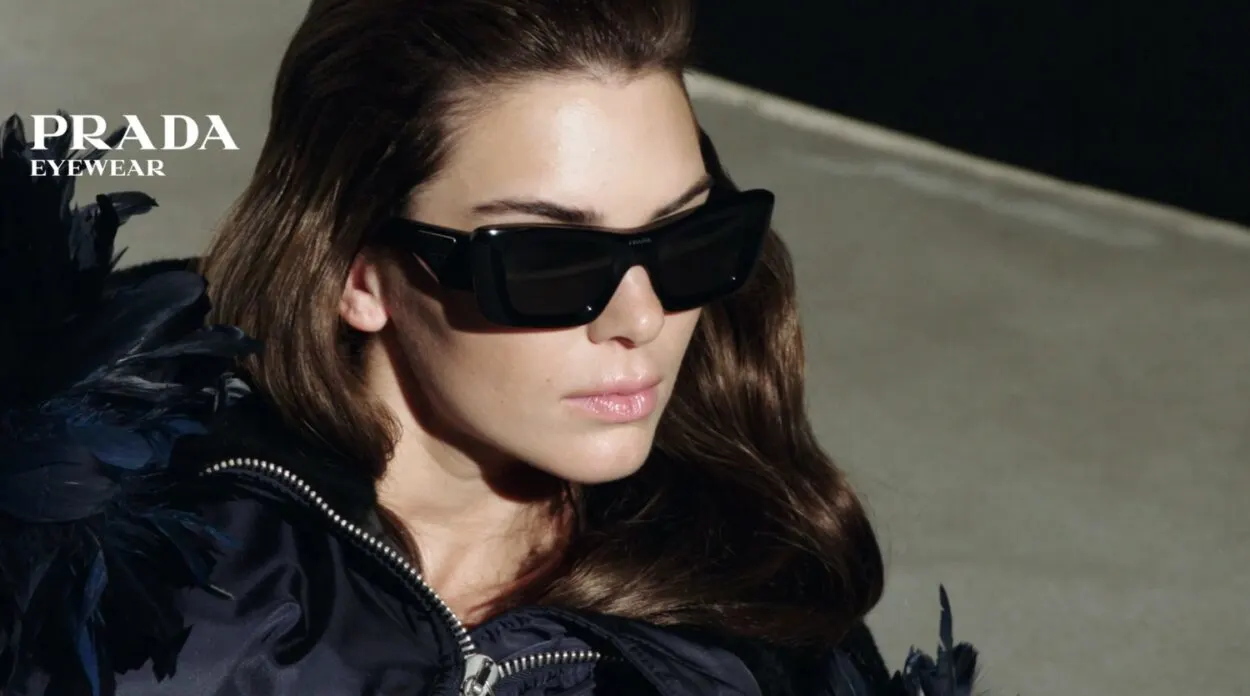Eyewear is a significant aspect of women’s fashion. The ideal pair of glasses, in their opinion, is the ideal finishing touch for accessorizing any ensemble.
It’s her personal style and a component of her wardrobe, and it communicates to the outside world who she is and what she stands for in terms of “fashion.”
Ray-Bans are unquestionably a wise investment if you’re looking for sunglasses that combine style and practicality. They not only have a fantastic appearance but also provide 100% UV protection to save your eyes from the sun’s harmful rays.
The non-polarized Rayban spectacles and the polarized Rayban P are both made by Rayban. While non-polarized lenses only filter bright light, polarized lenses are specifically made to block the glare from reflected light.
Keep reading to learn more about Ray-Ban glasses, their features, and the different styles available. Let’s Begin!
What Are Ray-Ban Glasses?
The “Anti-Glare” prototype was developed in 1936 and had plastic frames and green lenses that could block off glare without impairing vision. Thus, the ability of these glasses to block out ultraviolet or infrared light is where the name “Ray-Ban” originates.
While Ray-Ban has been a well-known American brand since 1937, the country has not recently produced any Ray-Ban eyewear.
Ray-Ban was sold by Bausch & Lomb to the Italian eyeglasses manufacturer Luxottica in 1999. Nowadays, Ray-Bans are produced in China and Italy.
Ray-Ban is fairly in the middle of the price range, with frames constructed of titanium that are quite light costing up to $500 for a pair.
You can be confident that the Ray-Ban eyewear you purchase will have high-quality lenses and robust frames that can withstand the activities your day may bring.
3P On Ray Ban
Stronger glare protection is represented by category 3, while the P stands for polarization, which further decreases glare.
The name of a Ray-Ban lens is always made up of a number and a letter. Numbers ranging from 1 to 4 are used to rank the categories.
One denotes exceptionally bright lenses with very little glare protection, while category 4 denotes very intense tints that should only be used in the mountains.
The letter comes next, after the description of the hue. You have polarization if the letter after that is P.
An N is placed after the number if you do not have polarized lenses. it denotes lenses without polarization.
What Are Polaroid Lenses?

Sunglasses with polarized or anti-glare lenses can lessen eye strain and light glare; hence, they can also enhance visibility and sun safety.
The most crucial UV protection shields your eyes from UV radiation. Polarization is an optional process that removes glare. You can choose the greatest pair of sunglasses by learning more about these two possibilities.
How Polaroid Lenses Work
To filter light, polarized lenses have a unique chemical put to them. In order to prevent some of the light from entering through the lens, the molecules of the chemical are arranged in a particular way.
Imagine it as a window miniblind that is hanging there. The only visible light comes from the blinds’ openings.
The filter in polarized sunglasses makes vertical light holes. Only light rays that are directed vertically toward your eyes will pass through those gaps.
The lenses, for example, stop all horizontal light waves from refracting off of a smooth pond or a shining automobile hood.
This filtering produces a somewhat darker-than-normal image when using polarized lenses; these lenses can make objects appear clearer and crisper, and they make it easier to perceive details.
The benefits of polaroid lenses are as follows:
| Benefits | Description |
| UV Protection | It provides substantially stronger protection from both types of UV rays (some even 99-100%). |
| Reducing Horizontal Glare | Wearing polarized glasses outdoors can reduce glare and help people see despite a bright glare. |
| True to Color | It can accurately represent color. This implies that you will be able to see true colors and all of their nuances. |
| Investment | Due to the superior quality lenses that safeguard your eyes, it is pricey; consider it an investment in your well-being. |
Ray-Ban P. Glasses

In Ray-Ban sunglasses, the “P” stands for “polarized.” Polarized lenses can significantly improve your driving vision by reducing glare from surfaces like water, snow, and asphalt.
Because they can lessen glare from the sun, polarized sunglasses cost extra. Those who drive or engage in outdoor activities would particularly benefit from this.
The letters “RB” and the Ray-Ban insignia will be imprinted on the lenses of genuine Ray-Bans; the Ray-Ban polarized lenses will have “Ray-Ban P” engraved onto the top corner. If this is missing, they most probably aren’t authentic Ray-Bans.
Polarized lenses for your sunglasses are something you should absolutely think about getting if you’re fortunate enough to have extra cash.
You can enhance the safety of your eyes and present yourself more stylishly by donning them.
Difference Between Ray-Ban And Ray-Ban P Glasses
Since pupils dilate in an effort to let in more light, regular sunglasses make it easier for UV rays to enter the eyes, whereas polarized sunglasses provide 100% UV protection.
The iconic Ray-Ban Wayfarer, for instance, is always in style. Although its popularity has fluctuated over time, it has never lost its appeal. It was in style in the 1950s.
The quality was excellent when Bausch & Lomb owned Ray-Ban, and as far as I’m aware, it still is. The sturdy frame is appropriate for both men and women.
The non-polarized Ray Ban spectacles and the polarized Ray Ban P are both made by Ray Ban. While non-polarized lenses only filter bright light, polarized lenses are specifically made to block the glare from reflected light.
Compared to Ray-Bans with nonpolarized lenses, polarized lenses cost about $50 extra.
The cost of the upgrade above the nonpolarized option may be even higher than $50 depending on the type of coating that may be used on the lenses in conjunction with the polarization option.
For the majority of people, polarization is worth the extra cost. Increased contrast and enhanced glare protection are the causes. These are significant benefits for most people.
Alternatives to Ray Ban Brand
Prada

Men’s and women’s glasses by Prada include contemporary frame designs made of premium materials. There are numerous frame forms offered by Prada, including butterfly, cat-eye, irregular, oval, pillow, pilot, rectangular, and square.
Prada sunglasses are a premium brand of designer eyewear; they frequently cost several hundred dollars and can cost anywhere from $350 to $550 or more.
The good news is that you might be able to purchase Prada sunglasses on sale and save money with some merchants’ discount codes or coupons. For instance, Sunglass Hut frequently has sales on a few Prada sunglasses models.
Oakley

The Oakley Company creates, develops, and produces a variety of accessories and sports performance gear, such as sunglasses, eyeglasses, sports visors, ski and snowboard goggles, watches, clothing, backpacks, and other accessories.
All Oakley Authentic lenses completely filter UVA and UVB rays, as well as damaging blue light that is up to 400 nanometers in wavelength. Your eyes will be less stressed and have better long-term health if you block out dangerous UV radiation.
Performance sunglasses with Oakley Prizm lenses are made for sports including baseball, fishing, golf, skiing, and riding.
Dark lenses alone can make it more difficult to see, therefore Oakley’s Prizm lenses amplify certain wavelengths of color vision in addition to UV rays to improve contrast and detail.
Conclusion
- Transparent material covers polarized lenses. Glass or plastic may be used for the lens. In either case, polarized lenses can filter out specific kinds of light waves. The main purpose of this is to shield your eyes from as much glare as possible.
- The greatest time to get a pair of polarized sunglasses is if you frequently drive in the sun, or participate in outdoor sports or activities like fishing or hunting.
- A pair of Ray-Ban lenses are polarized if it says “Ray-Ban P” in the upper corner; in its sunglasses lens technology, Ray-Ban offers variations on polarization: a lens coating intended to reduce glare from reflective surfaces like snow or water.
- Horizontally (at a 180° angle), polarized filters are set. The filter’s crystals block horizontal light rays but allow vertical ones to pass.
- Vertical light passes through the lens and illuminates our field of vision, while horizontal rays are refracted and shield us from glare. Polarized lenses reduce glare from both surface reflections and airborne dust particles.

